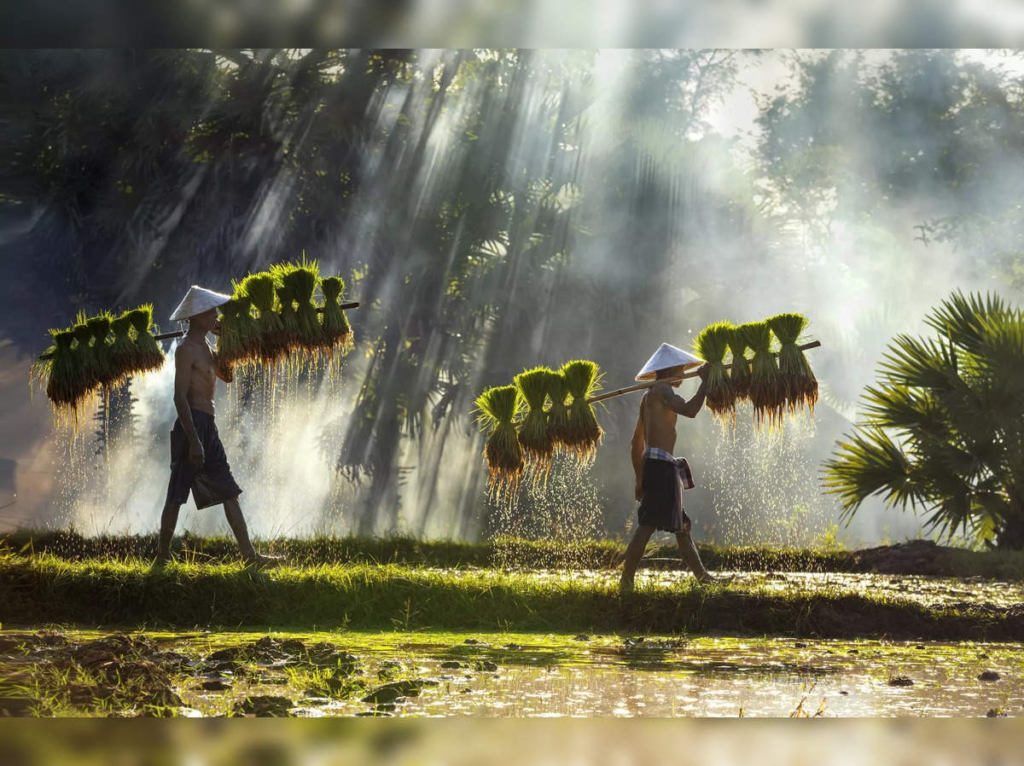Vietnam farmers are adopting the alternate wetting and drying (AWD) technique to reduce methane emissions from rice paddies.
About Alternate Wetting and Drying (AWD):
- AWD is a water-saving strategy designed for lowland rice farmers to manage water use more efficiently in irrigated fields.
- This method involves irrigating the field after a specified number of days following the disappearance of ponded water, leading to periods of flooding alternated with drying.
- The intervals between irrigation can range from 1 to over 10 days, depending on the soil’s characteristics.
- A crucial component of AWD is the use of a perforated tube inserted into the soil, which helps farmers monitor the water level that should be maintained at about 15 cm below the soil surface.
- AWD is a relatively simple and low-cost approach that effectively reduces water usage in rice cultivation by 30%.
Benefits of Alternate Wetting and Drying (AWD)
- Significantly lowers methane emissions by 30-70%, contributing to a reduction in greenhouse gases without impacting rice yields.
- The precision in water management helps maintain the productivity of rice fields while saving on water and production costs.
- Utilizing drones for fertilization not only reduces labor costs but also enhances the precision of fertilizer application.
- Accurate fertilizer application helps avoid excessive use, preventing the release of nitrogen gases that can exacerbate global warming.
Ref:Source
| UPSC IAS Preparation Resources | |
| Current Affairs Analysis | Topperspedia |
| GS Shots | Simply Explained |
| Daily Flash Cards | Daily Quiz |



